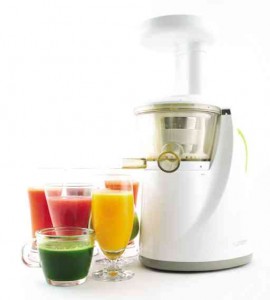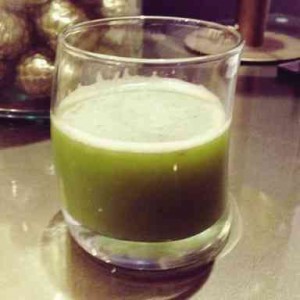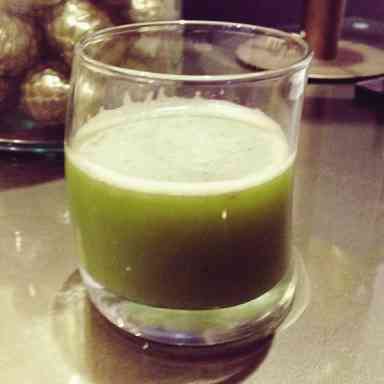
Every day for the past seven months, I’ve been drinking a green brew of fruits and vegetables several times a day upon the advice of alternative medicine specialist Dr. Antonia Park.
The drink unappetizingly looks like it came straight out of a pond, but I’ve gotten used to the taste, and I must say it tastes better than it looks. The drink is energizing and refreshing, especially given the warm temperatures of late.
If, in the past, people would juice oranges in a cone-shaped contraption, these days the juices getting cachet are far from the orange and the yellow we’ve gotten used to. Years ago, fans of this green juice were mostly advocates of the raw food movement and fitness buffs.
But whether it’s to slim down, detoxify or just be healthier, more and more people are getting into juicing these days.
We all know that eating fruits and vegetables is good for one’s health, but to get the maximum benefits, can you imagine eating several kilos of them every day?
According to nutritional detoxification specialist Dr. Jason Peñaranda, “Juicing is good because it allows you to get a lot more nutrients in a smaller volume. For example, if you require a lot of vitamin A and you will get it from carrots, you might not be able to consume four in a meal. But if you juice it, that’s just a big glass.”
And for those who are averse to vegetables, especially children, juicing also allows for a variety of fruits and vegetables in a yummy mix, helping mask the taste of bitter green vegetables.
“You get that taste that you won’t normally get when you eat them, like when you combine apple, cucumber and carrot,” adds Peñaranda.
Downside?
“You lose a lot of the fiber that cleanses the intestinal tract. These fibers help you feel full and regulate blood sugar. You lose all of these when you juice,” says Peñaranda.
Most health practitioners agree that juicing is a good supplement especially when one is ill or stressed, but it’s not superior to eating the real thing. Peñaranda recommends both.
Getting started
First, invest in a juicer; a blender is not a juicer. The blender will just chop up fruits and vegetables into a thick shake, while the juicer separates all the fibers and solids from the juices.
Juicers generally fall into three categories: Fast, slow and whole food. The fast kind produces a thin juice, while the slow juicers do a better job with vegetables, and also have a little fiber in the juice. The whole food type produces the thickest texture, which resembles a smoothie.
There are many brands out there, with prices ranging from P1,500 to the five-figure variety. For beginners, Cuisinart and Black & Decker are great brands to try, but if you plan to do this seriously in the long run, better buy the higher-priced ones.
For juicing fanatics, the Hurom slow juicer, Vitamix’s professional series and Breville’s Juice Fountain Crush are the most popular.

To maximize benefits, Peñaranda recommends having all colors of the rainbow represented in the fruits and veggies that you’re juicing. For those looking into lessening their calorie intake, Peñaranda recommends juice as a substitute for breakfast or dinner, but cautions against starting right away on long juice detox programs.
Peñaranda’s recipe below will help address health issues like high blood pressure and blood sugar, kidney stones, hyperacidity, fatigue, insomnia, and irregular bowel movements.
To this basic mix, you can also add any fruit or vegetable. Adding citrus will give it more tang, while sugar beets and honey can make the drink more palatable to children.
You can also experiment with spices and garnishes like turmeric, ginger and parsley to vary the flavor.
More juicing tips
1. For best results, take the juice on an empty stomach, and drink your juice immediately. When the juice comes into contact with air, the raw nutrients will start to break down and the enzymes will begin to deteriorate.
2. Avoid starches and anything oily and heavy, like potatoes, avocados, squash and bananas.
3. Juice your produce right out of the fridge; they juice better when cold.
4. Watch your blood sugar. If you are on the diabetic side, add veggies and less fruits. Too much fruit in the juice can raise your blood sugar, adds Peñaranda.
5. Juice produce with skin on to keep nutrients intact.
Basic juice recipe (makes 1 glass):
1 small carrot
½ cucumber
2-3 celery stems
E-mail frontrowedit@gmail.com











































